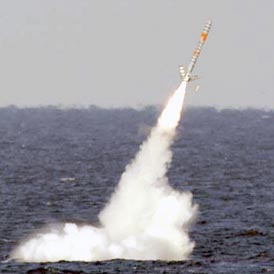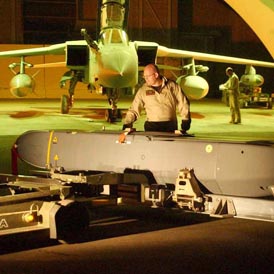Libya: Coalition’s targeted attacks on Gaddafi’s hardware
As western planes and missiles continue to attack Libyan military hardware, defence analyst Anthony Tucker-Jones assesses the air war and refutes Gaddafi’s claims of mounting civilian casualties.

Colonel Gaddafi claims that the implementation of the Libyan no-fly zone is causing civilian casualties – but he has provided very little evidence to support this allegation to date.
Despite the Coalition having conducted more than 300 combat sorties and launched in excess of 160 Tomahawk cruise missiles, fighting continues unabated at Ajdabiya, Misrata and Zintan in defiance of the call for an immediate ceasefire. Regardless of the fears of civilian casualties the UN cannot sit idly by.
Most notably Coalition aircraft have been targeting pro-Gaddafi armour, artillery and missiles in the Misrata area in an effort to lift the siege. Residents say that, despite the destruction wrought on Gaddafi’s forces, the air strikes have not caused any loss of civilian life.
Anything that reduces civilian casualties is a guaranteed winner with politicians. As well as cruise missiles, laser-guided bombs – known as precision-guided munitions in the trade – have been the weapon of choice in every major conflict since operation Desert Storm in 1991.
They offer commanders pinpoint accuracy and economy of effort. This of course has proved vital with punitive operations in support of UN security resolutions.

Storm Shadow (known as the Scalp EG by the French) currently in use with the RAF over Libya is a long range conventionally-armed cruise missile. First delivered in 2003 it received its baptism of fire with the RAF’s Tornados during Operation Telic when they were fired at Iraqi targets.
As well as the American Tomahawk cruise missile the Coalition’s arsenal includes the American Paveway LGB kit that converts 500-2,000lb dumb bombs into “smart bombs”. During Operation Iraqi Freedom in 2003 American fighter-bombers used 10,000 LGBs, accounting for half of all the air-launched precision guided weapons.
Paveway has proved so successful that it is in use with more than 30 countries, including the UK, and more Paveways have been expended than any other guided weapon.
Targeting
While targets can be laser-designated by aircraft, even greater accuracy can be achieved using Special Forces on the ground to illuminate a target. The Coalition will argue that the presence of British commandos and the SAS/SBS and US Delta Force, SEALs and Rangers does not constitute an occupying force. What they can do is facilitate air strikes.
Building on the legacy of Paveway, US forces are also able to call on the J series of munitions. One of the latest is the JDAM or Joint Direct Attack Munition, which was first deployed in the Balkans and Iraq.
This again enhances dumb bombs. In the 2,000lb range there are two variants – one for soft targets and another for bunker busting – ideal for breaking through aircraft-hardened hangars.
There is also the JSOW or Joint Stand Off Weapon with a range of 70 miles and the JASSM or Joint Air-to-Surface Stand -off missile, all of which can be delivered with a high degree of accuracy. Cruise missiles and the J-series are reliant on satellite based GPS or Global Positioning System (with inertial navigation as backup) to find their targets.
Such weapons though are not foolproof, especially when confronted with human shields or military facilities and forces which are deliberately placed in urban areas.
The Libyan opposition argues that any loss of life due to Coalition air strikes is worth the sacrifice if it prevents even greater losses at the hands of Gaddafi’s loyalists. Few can argue with such sentiments.
Anthony Tucker-Jones is author of The Rise of Militant Islam and is a correspondent for defencemanagement.com and intersec – The Journal of International Security.
-
Latest news
-
As India goes to the polls in the world’s largest election – what do British-Indians think?6m

-
Tees Valley: Meet the candidates in one of the biggest contests coming up in May’s local elections4m

-
Keir Starmer says public sector reform will be a struggle7m

-
Nicola Sturgeon’s husband Peter Murrell charged with embezzlement of funds from SNP1m

-
Ukraine might finally get $60billion in American weapons and assistance to defend against Russia3m

-




